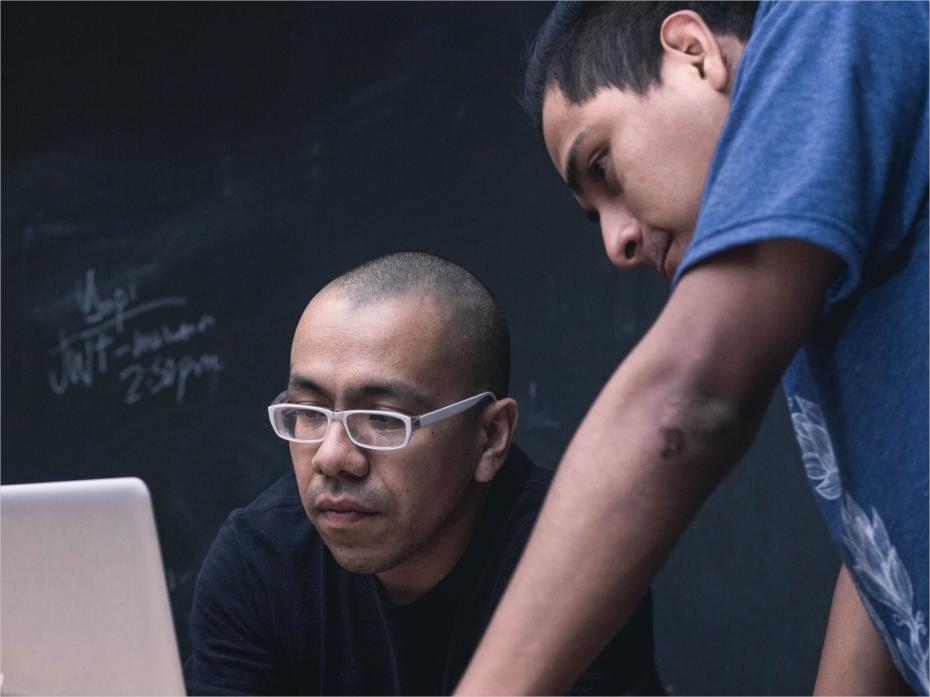During the seismic shift to online and blended formats that we’ve all attended to, much of the focus has been on technological capabilities and solutions. Within this, even finer focus has been placed on online behaviours as a way of understanding student engagement.
However, lessons from cyberpsychology may be central here. To explain a little, cyberpsychology focuses on the psychological experiences of our interactions with new technology and the internet and seems to be entirely relevant to many discussions about online learning.
Technology “use”, for example, can cover a broad spectrum of behaviours, interactions and experiences. This may refer to the behaviour behind our decisions to use certain technologies or platforms within online teaching and learning (adoption), or the specific ways we interact on platforms and with others (behaviours and interactions), or it may refer to our more general engagement and experiences with these platforms (engagement).
In terms of adoption, there are many practical considerations here for online learning, and it requires that we apply academic rigour to questions such as why we might choose Google Docs for collaborative note-taking over Microsoft OneDrive.
There is lots of research underpinned by the “technology acceptance model” and more recently the “technology integration model” that shows how this applies across contexts. The research shows we’re most likely to use technologies that we believe are easy to use and useful for the task at hand. However, some questions that are useful for us to consider in terms of technology adoption are: how much choice do our students have in adopting certain learning platforms? How do we induct our students (and colleagues) in accepting certain platforms, communicating their usefulness and demonstrating how to use them?
These are important because we often don’t factor in the perceptions of all parties when making decisions about learning technologies. In respect of students, this is potentially problematic as it may be restricting autonomy in their learning experiences when they have no say over which technology they use − the platforms we believe to be easy to use and useful may not be deemed so by our students. Therefore, when transitioning into online teaching and learning, we must reflect deeply on the technicalities of use as well as how to communicate the value and usefulness of these platforms.
We then turn to the second area of technology use: behaviours and interactions. This refers to how we interact with the technology itself, as well as others, in online spaces. For example, there has likely been much interest of late in how many times our students have accessed the virtual learning environment (VLE) or completed online tasks. And this has often been held up as a way to understand how “engaged” our students are.
For example, we may use weekly quizzes not just as an assessment tool, but also as part of engagement monitoring. Specific questions to ask ourselves here include: what behaviours help signal pedagogic “success” (motivation, engagement etc)? How do we induct our students into knowing how these behaviours relate to their learning success? How do we use these behaviours ethically and transparently to understand our students’ pedagogic experiences?
If it is the case that we are using analytics to monitor students, then these need articulating in course handbooks and/or assessment briefings, so that the expectations are made transparent.
We have typically focused on these specific online behaviours, via the use of analytics, as a means of understanding “engagement”. However, I would argue that this only provides a partial picture of engagement − in the context of online teaching and learning, it is important we distinguish between technology engagement and educational engagement.
Educational engagement includes three components: behavioural (attendance, contribution to discussions, access of VLE), emotional (sense of belonging, enjoyment) and cognitive (task focus).
Focusing on specific online behaviours and using analytics to measure them only really relates to behavioural engagement and may in fact signal students’ engagement only with the technology itself and not necessarily with their educational experiences underpinning it.
This is where other aspects of engagement become important. Students’ emotional engagement can be developed by engendering a sense of belonging or connection − to their course, their peers, their university. Boosting this sense of collective identity is one way to promote engagement that takes the focus away from the technological platforms we are reliant on and places it on students’ educational experiences and engagement more generally.
This could be supported by less focus on tutor-led sessions and more small-group, student-driven projects or tasks. An added benefit here is that collective identity, connection and emotional engagement can cut across contexts and therefore be especially useful for successful blended learning.
In short, online teaching and learning has fixed the spotlight firmly on behavioural engagement, but this may only tell us how well our students have engaged with the technological tools associated with their learning, rather than their learning itself. And to be frank, this is by no means sufficient if we want blended or online formats of learning to be successful.
Linda Kaye is a reader in psychology in the department of psychology at Edge Hill University, UK. She specialises in cyberpsychology − the psychology of how we experience and are impacted by new and emerging technologies and the internet.
If you would like advice and insight from academics and university staff delivered direct to your inbox each week, sign up for the Campus newsletter.




comment